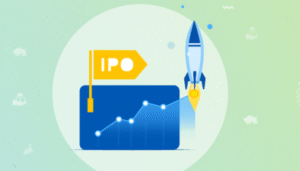
what is an ai agent
In today’s rapidly evolving digital landscape, automating business processes has moved from being a competitive advantage to an absolute necessity. Enterprises large and small are looking to optimize workflows, reduce operational costs, and achieve greater accuracy and efficiency. At the center of this movement are two powerful forces: AI-powered automation (also known as intelligent automation or IA) and traditional Robotic Process Automation (RPA).
But which approach is right for your business? In this comprehensive guide, we’ll dissect both paradigms, examine their differences, strengths, weaknesses, and strategic fit. By the end, you’ll be equipped to make an informed decision about the future of automation in your organization.
What Is RPA? Understanding the Basics
Robotic Process Automation (RPA) is a technology that uses software bots to automate repetitive, rule-based tasks. RPA bots imitate human actions by interacting with the digital workplace through applications’ existing user interfaces (UI). Classic examples of RPA in action include data entry, routine report generation, invoice processing, and system updates.
Key Characteristics of RPA
- Rule-Based: Ideal for tasks with clear, static rules and predictable outcomes.
- Works with Structured Data: RPA excels when handling standardized data formats in forms, databases, or spreadsheets.
- Repetitive High-Volume Tasks: Best suited for automating labor-intensive, error-prone tasks that sap valuable employee time.
- Non-Intrusive: Because RPA interacts directly with the UI, it typically doesn’t require changes to underlying systems, making deployment straightforward.
Bottom Line: RPA is the go-to solution if you have large volumes of repetitive, rules-driven tasks that follow a consistent process.
What Is AI Automation? The New Era of Intelligent Automation
AI-powered automation or intelligent automation (IA), represents the next evolution in process automation. Unlike traditional RPA, intelligent automation combines RPA’s process efficiency with artificial intelligence (AI) technologies such as machine learning (ML), natural language processing (NLP), and computer vision.
IA allows automation to extend far beyond repetitive, rules-based tasks. For example, it can read and interpret emails, extract entities from unstructured documents, understand human language, classify images or audio clips, and even make data-driven predictions about business outcomes.
Key Characteristics of AI Automation
- Cognitive Capabilities: AI can handle tasks that demand reasoning, judgement, and problem-solving.
- Works with Unstructured Data: AI can extract, interpret, and act on data in formats like text, images, audio, and video.
- Learning & Adaptation: AI models improve as they learn from new data and outcomes, constantly optimizing performance.
- Advanced Decision-Making: AI systems can make complex decisions autonomously, even in uncertain scenarios.
Bottom Line: AI automation is the solution for complex, evolving, or cognitive tasks beyond the reach of simple rule-based bots.
Core Differences: AI Automation vs Traditional RPA
To navigate your automation strategy, understanding the major differences between these two approaches is crucial. Here’s a side-by-side comparison:
FeatureTraditional RPAAI-Powered Automation (IA)Task ComplexitySimple, rule-basedComplex, cognitiveData TypesStructured data onlyStructured & unstructured dataDecision MakingPre-defined rulesAI-driven, adaptiveLearningNo learning/adaptationCan learn and improve over timeException HandlingManual intervention/programmingAutomated via AI and MLScalabilityScalable for repetitive processesScalable for complex, dynamic tasks
Pros and Cons: Which One Fits Your Needs?Traditional RPA: Advantages & Disadvantages
Advantages:
- Lower Cost: Straightforward to implement, with moderate upfront investment.
- Quick to Deploy: RPA solutions can be rolled out quickly without major system changes.
- User-Friendly: Many RPA tools cater to non-technical users.
- Improved Accuracy: Reduces errors by eliminating manual data handling.
- Operational Efficiency: Frees employees from mundane tasks.
Disadvantages:
- Limited Versatility: Cannot process unstructured information (e.g., scanned PDFs, emails, natural language).
- Rigidity: Any change in the UI or workflow can break automations.
- No Self-improvement: RPA won’t learn or adapt without human-led reprogramming.
- Dependence on Rules: Only functions when all variables are static and defined.
AI Automation (Intelligent Automation): Advantages & Disadvantages
Advantages:
- Handles Complexity: Automates tasks that require judgment, perception, or analysis.
- Unstructured Data Friendly: Can interpret and act on natural language, images, and audio.
- Continuous Learning: Models get smarter over time.
- Strategic Insights: AI can offer recommendations and predictions, not just execute tasks.
- Greater Scalability: Can handle evolving, ambiguous business needs.
Disadvantages:
- Higher Initial Cost: More expensive to develop and deploy.
- Longer Time to Value: Implementation can be more complex and time-consuming.
- Requires Specialized Skills: Building and running AI requires expertise in data science, ML, or NLP.
- Data Dependency: Effectiveness is tied to the availability and quality of training data.
- Complex Maintenance: AI systems may require ongoing tuning and monitoring.
Choosing the Right Solution
So which is better: AI automation or traditional RPA? The answer depends on your use case, business priorities, and digital maturity.
Choose Traditional RPA If:
- You need to quickly automate back-office, repetitive tasks (e.g., data migration, form filling).
- Your processes rely exclusively on structured data and clear rules.
- Budgets and timelines are limited, and you need rapid ROI.
- Your team prefers minimal disruption to existing IT systems.
Choose AI-Powered Automation If:
- Your business processes involve unstructured data, such as emails, documents, or media.
- The tasks require cognitive abilities, adaptation, or predictive analytics.
- You need a solution that learns and improves over time.
- Your business environment is dynamic and demands agility and scalability.
Hybrid Approach: The Best of Both Worlds
For many organizations, the most effective approach is a hybrid model that combines the strengths of both RPA and AI. In this scenario, RPA handles standardized, repeatable elements while AI takes over wherever intelligence, insight, or flexibility is required. This sometimes involves adding enterprise AI platform capabilities to orchestrate smooth collaboration between bots and AI-powered agents.
Real-World Examples and Enterprise Impact
Let’s illustrate how these automation strategies play out in the real world:
- Financial Services: RPA can quickly process batch transactions; AI handles tasks like fraud detection, personalized risk assessment, and intelligent document interpretation.
- Healthcare: RPA automates patient intake and billing; AI extracts data from medical records, predicts patient outcomes, and processes radiological images.
- Customer Service: RPA routes tickets and pulls customer data; AI-powered enterprise ai agent can answer complex queries, understand sentiment, and resolve multi-layered customer issues.
By leveraging AI-powered automation, organizations can radically expand their automation potential, driving a higher level of digital transformation.
The Future: AI Agents and the Rise of Advanced Intelligence
As enterprises journey deeper into automation, the next frontier is the emergence of AI agents. But what is an ai agent, and why does it matter? Simply put, AI agents are autonomous, adaptive, and capable of handling multifaceted business processes—from end-to-end customer journeys to dynamic supply chain management.
AI agents combine the reliability of RPA with advanced AI capabilities, operating as digital colleagues inside the modern workplace. With platforms like enterprise ai platform now available, organizations can seamlessly unify RPA, AI, data analytics, and process orchestration into one powerful landscape.
To see them in action and explore these solutions for your business, visit enterprise ai agent.
Making the Right Choice: Insights for Leaders
Ultimately, your choice between traditional RPA and AI-powered automation should be driven by the complexity of your processes, the structure of your data, and the strategic goals of your organization. As businesses continue to navigate the shifting sands of digital transformation, combining the reliability of RPA with the intelligence of AI will become the gold standard for enterprise automation.
Key Takeaways:
- Start with RPA for immediate wins in rules-driven processes.
- Expand to AI automation as your needs become more complex.
- Strive for a hybrid, integrated ecosystem leveraging the best of both approaches.
- Continuously assess and scale as your enterprise grows and evolves.
Frequently Asked Questions (FAQ)
- What is the main difference between RPA and AI automation?
RPA uses bots to automate simple, rule-based tasks with structured data, while AI automation leverages artificial intelligence to handle complex, cognitive tasks involving unstructured data and adaptive decision-making. - Can RPA and AI automation be used together?
Absolutely. Many organizations deploy a hybrid model, using RPA for repetitive tasks and AI for intelligence-driven, adaptive processes. - Is RPA obsolete now that AI automation exists?
No, RPA is still highly relevant for straightforward, repetitive tasks where rules don’t change often. AI builds upon, rather than replaces, these capabilities. - What are some common use cases for AI-powered automation?
Examples include email classification, intelligent document processing, image recognition, conversational chatbots, and predictive analytics. - What is needed to get started with AI automation?
Successful AI automation requires clean data, AI expertise, adequate infrastructure, and a clear understanding of business goals. - How does implementing RPA impact employees?
RPA frees employees from dull, repetitive work, allowing them to focus on more meaningful, higher-value activities. - Is AI automation more expensive than RPA?
Yes, AI automation typically involves higher costs upfront due to the need for advanced technology and expertise but can deliver greater value over time. - Can RPA handle exceptions or changes in business processes?
RPA can handle exceptions only if they are well-defined; otherwise, human intervention or reprogramming is required. - Do I need to change my existing IT systems to implement RPA or AI automation?
RPA is non-intrusive and generally doesn’t require changes. AI platforms might necessitate some integration, especially for advanced functionalities. - Where can I learn more about enterprise AI agents?
Visit our other articles to learn more about AI agents.
By mastering both RPA and AI automation, your business can unlock new levels of efficiency, competitive advantage, and digital innovation. The future belongs to the agile, the intelligent, and the automated—so start exploring your options today!







